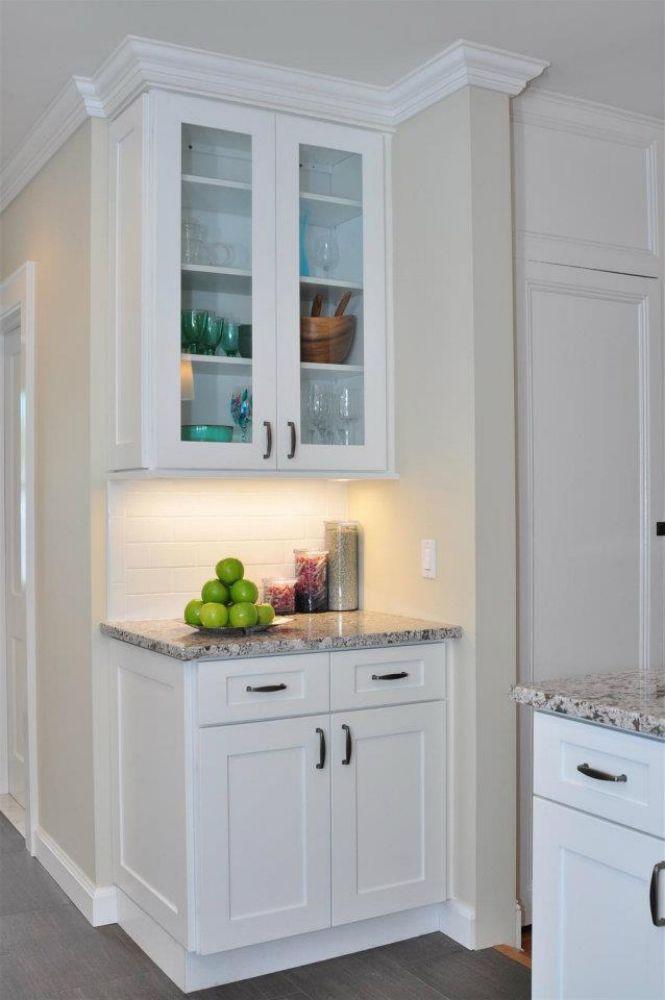Introduction to Forevermark Petit White Cabinets Installation
Forevermark Petit White Cabinets are popular among homeowners for their timeless white finish, shaker-style design, and durability. Whether planning a kitchen remodel or a bathroom upgrade, many buyers wonder if these cabinets come with installation instructions, especially if they intend to attempt a DIY installation. Proper installation is crucial to ensure the cabinets are level, aligned, and functional for years to come. Understanding what comes with the cabinets and how to use the instructions effectively is key for both DIYers and professionals.
What Comes in the Box with Petit White Cabinets
When you purchase Forevermark Petit White Cabinets, the package typically includes:
-
Pre-assembled cabinet boxes (or RTA units if specified)
-
Doors and drawers (attached or pre-drilled for hinges)
-
Hardware (knobs, pulls, hinges, drawer slides, screws)
-
Installation Instructions (detailed manuals or guides)
-
Optional accessories like shelf pins or soft-close mechanisms
The installation instructions are designed to guide the homeowner through both simple and complex setups, ensuring proper assembly and alignment.
Importance of Installation Instructions
Installation instructions serve several purposes:
-
Step-by-Step Guidance: Clear instructions show the proper sequence for assembling or mounting cabinets.
-
Safety: Recommendations on lifting, handling, and securing cabinets reduce the risk of injury.
-
Leveling and Alignment: Instructions emphasize using levels, shims, and clamps for precise installation.
-
Hardware Placement: Correctly installing hinges, drawer slides, and knobs ensures smooth operation and long-term durability.
-
Warranty Compliance: Following manufacturer instructions is often required to maintain warranty coverage.
Ignoring or misinterpreting these instructions can lead to misaligned cabinets, uneven countertops, or hardware malfunction, which may also affect warranty claims.
Types of Installation Instructions Provided
Forevermark typically provides instructions in multiple formats to accommodate different users:
1. Printed Manuals
-
Step-by-step printed manuals included in the cabinet box.
-
Includes diagrams, part identification, and assembly guidance.
-
Useful for following along without digital devices.
2. Online PDFs
-
Many retailers or Forevermark websites provide downloadable PDFs.
-
High-resolution diagrams and detailed explanations.
-
Convenient for referencing during installation or printing additional copies.
3. Video Tutorials
-
Some cabinets come with QR codes linking to video tutorials.
-
Visual guides show proper mounting techniques, alignment, and hardware installation.
-
Particularly helpful for visual learners or first-time DIYers.
Pre-Installation Preparation
Before referring to the instructions, proper preparation ensures a smoother installation:
-
Measure the Space: Verify wall dimensions, floor level, and ceiling height.
-
Check Cabinet Contents: Ensure all parts, doors, drawers, and hardware are included.
-
Gather Tools: Common tools include a drill, screwdriver, level, clamps, shims, and measuring tape.
-
Clear Workspace: Remove obstacles and create a safe area for assembly or wall mounting.
Step-by-Step Installation Overview
Following the instructions closely, the general installation process involves:
1. Locate Studs
-
Use a stud finder to mark wall studs.
-
Cabinets must be anchored to studs for secure mounting.
2. Level Base Cabinets
-
Base cabinets should be shimmed to ensure level placement.
-
Use a long level to check across multiple cabinets to avoid uneven countertops.
3. Secure Base Cabinets
-
Fasten cabinets to wall studs through the back panel.
-
Check for alignment and adjust shims as necessary.
4. Install Wall Cabinets
-
Use a temporary ledger board to support wall cabinets.
-
Attach to studs, ensuring cabinets are level and plumb.
-
Clamps can help align adjoining cabinets before fastening.
5. Connect Cabinets
-
Adjacent cabinets are secured together with screws or brackets.
-
Ensure doors, drawers, and frames are aligned for a seamless appearance.
6. Attach Doors, Drawers, and Hardware
-
Follow instructions for hinges, drawer slides, and knobs/pulls.
-
Soft-close mechanisms should be installed according to the manufacturer guide.
7. Final Adjustments
-
Test doors and drawers for smooth operation.
-
Make minor adjustments to alignment or hardware as needed.
Benefits of Following Installation Instructions
Adhering to the instructions provides several advantages:
-
Smooth Operation: Ensures drawers and doors function correctly.
-
Durable Installation: Proper fastening prevents sagging or misalignment over time.
-
Time Efficiency: Reduces trial-and-error during DIY installation.
-
Preserves Warranty: Many warranty claims require proper installation per manufacturer guidelines.
Tips for Successful DIY Installation Using Instructions
-
Read Through First: Review the entire manual before starting to understand the sequence.
-
Sort Hardware: Separate screws, hinges, and knobs for easy access.
-
Label Cabinets: If installing multiple cabinets, labeling helps maintain order.
-
Use Two People: Wall cabinets especially require two people for safe lifting.
-
Check Level Frequently: Small deviations can create larger problems across multiple cabinets.
Professional Installation Considerations
While instructions make DIY installation feasible, some homeowners may prefer professional installation:
-
Complex Layouts: L-shaped kitchens, islands, or stacked wall units may be challenging.
-
Time Constraints: Professionals can install cabinets faster.
-
Warranty Compliance: Some warranties may recommend professional installation for certain claims.
Even when hiring professionals, the installation instructions serve as a reference to ensure accuracy.
Common Issues Homeowners Encounter
Following the instructions closely helps prevent common issues such as:
-
Misaligned doors or drawers
-
Uneven base cabinets leading to countertop problems
-
Hardware installed incorrectly causing malfunctions
-
Damage to cabinet surfaces from improper handling
Reading the manual carefully and planning ahead minimizes these problems.
Conclusion
Forevermark Petit White Cabinets do come with installation instructions, available in printed manuals, online PDFs, and sometimes video tutorials. These instructions are vital for a successful DIY or professional installation, guiding homeowners through proper leveling, securing, hardware placement, and final adjustments. Following the instructions ensures smooth operation, durability, aesthetic alignment, and warranty compliance. By preparing adequately, gathering the necessary tools, and adhering to the step-by-step guidelines, homeowners can confidently install Petit White Cabinets and enjoy their elegant, functional, and long-lasting kitchen or bathroom upgrade.
Frequently Asked Questions
Q1: Do Petit White Cabinets include printed installation manuals?
A: Yes, they typically include printed step-by-step manuals with diagrams and hardware identification.
Q2: Can I access installation instructions online?
A: Yes, Forevermark provides downloadable PDFs and, in some cases, video tutorials for installation guidance.
Q3: Are installation instructions necessary for warranty coverage?
A: Yes, following the manufacturer’s installation guidelines is often required to maintain warranty validity.
Q4: Is DIY installation possible with the instructions provided?
A: Yes, the instructions are designed for DIYers, though larger or complex layouts may benefit from professional help.
Q5: What tools do I need to follow the installation instructions?
A: Common tools include a drill, screwdriver, level, clamps, shims, measuring tape, and a stud finder.

